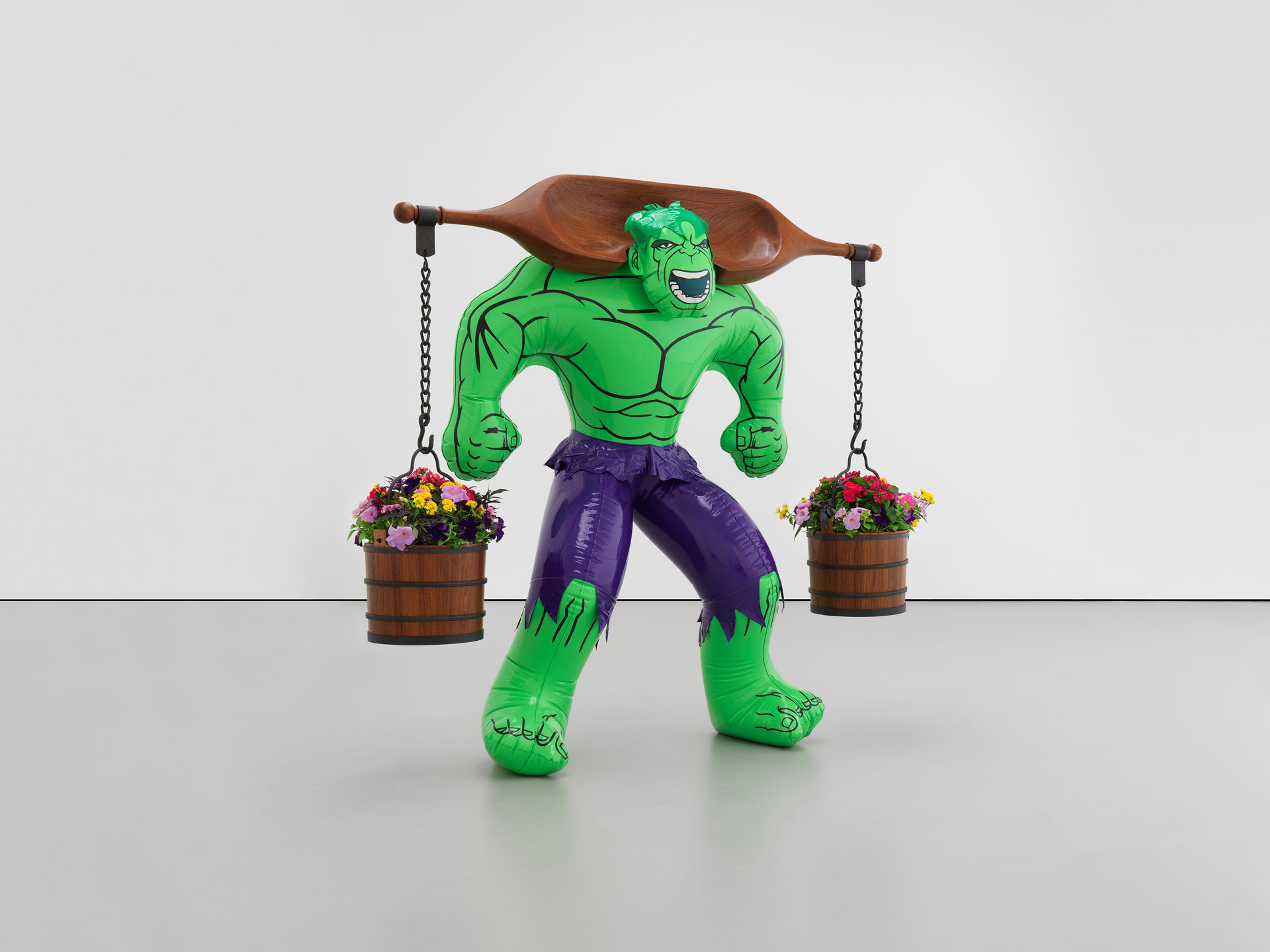Featured Work
2004 – 2014
American artist Jeff Koons (b. 1955) is widely regarded for his bold paintings and monumental sculptures that hold a mirror up to contemporary culture. Using the photorealistic and commercial aesthetic familiar from an earlier generation of Pop artists, Koons has generated his own universally recognizable style that frequently comprises smooth, highly reflective surfaces and bright, saturated colors. Koons typically works in series, tapping into subject matter from popular culture and art history that is frequently reminiscent of childhood in order to empower the viewer towards achieving a state of personal transcendence. The present work belongs to a Koons's "Hulk Elvis" series—a body of paintings and sculptures begun in 2004, some of which depict The Incredible Hulk, a character first introduced in a 1962 comic book. Koons describes the Hulk Elvis figures as being also inspired by the guardian gods of Eastern philosophy, and as such they are meant to convey tremendous power and testosterone. Made from polychrome bronze, Hulk (Yoke) depicts the superhero in a stereotypical macho pose with his legs apart, hands tightened in fists, and muscles flexed, as though ready for a confrontation or battle. Despite the solidity of the material, the figure appears inflated, with minute creases and folds creating a trompe l'oeil effect that heightens its hyper-realistic appearance. Based on a blow-up toy, anatomical features have been outlined with paint rather than carved, juxtaposing flatness and volume. The figure carries a yoke across his shoulders with buckets of live flowers hanging by a chain from each side. This series marks the first time that Koons has included live flowers as part of indoor sculptures. Their ephemeral delicacy provide a stark contrast to the aggressive demonstration of power by the Hulk figure. Koons notes on the tension implicit in his Hulk figures: "I do think that there are many polarities coexisting in a work of art—the more it emulates life, the more real it is. The Hulk is like a guardian god. For these Hulks to have the ability to be a guardian, they have to be able to protect, and to protect means to maintain and shelter and preserve. But at the same time it means they have to have to ability for violence, to be able to withstand any pressure....[T]hat type of tension is part of our day-to-day animal existence, part of what it means to be a human and alive and to be able to survive and to depend on instinct and stay in contact with feelings."¹ ¹ Hans Ulrich Obrist, "Interview with Jeff Koons," in Jeff Koons: Hulk Elvis. Exh. cat. (New York: Rizzoli, 2009), p. 126.
